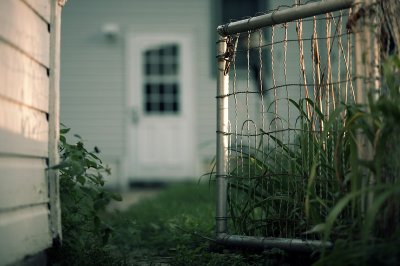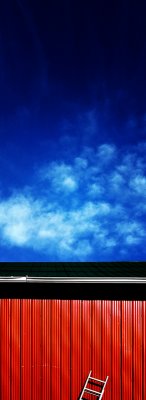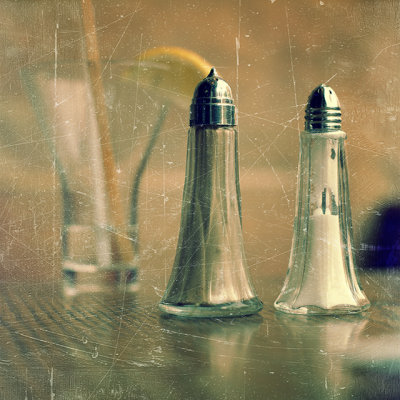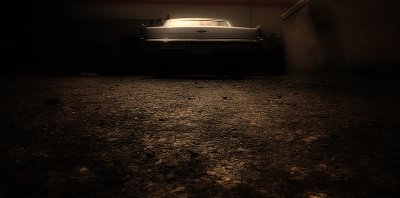Cropping

portrait | In this portrait orientation, the gate seems to receive more stature in the image. The image is not as calm as the landscape orientation. And frankly, I don't particularly like the steps in the image here...so I cropped them out using the landscape orientation. |

landscape | In this landscape orientation, even though the gate fills more of the frame, it is not dominant as it is in the portrait orientation. In fact, I think the out of focus door in the background is playing a much bigger role in this image. Additionally, this image has a slower pace for me. By pace, I mean that I consider each detail a bit more...the lack of a definite emphasis on the gate (as is created by the portrait orientation) leads me to look a little deeper. This is not to say that portrait orientations aren't useful...they just have a different effect. |

panoramic landscape | The subject in this panoramic landscape has more stature than if it had just been a standard lanscape shot. By using my hands to create a standard landscape orientation it quickly becomes apparent that the image loses some of it's life. The pace seems to be much slower and even abrupt without the panorama. Here there is a flow, a continuity that is created because of the panorama. |

panoramic portrait | If portrait orientations give stature to the subject, than panoramic portraits do the same thing but even more strongly. Here the ladder gains much more stature (even with it's small proportion) than it would in a standard portait. It is because it has room to grow, I think. The panorama again is giving much more drama and continuity to the image than would otherwise be possible with a standard crop. |

square | The neutrality of the square crop is very evident in this image. It lends all of the development of stature and pace to the subject of the image. It is very documentary in style. And it easily gets rid of unwanted elements, allowing for simplification of the composition. Here also, the rule of thirds is seen (albeit not rigidly) to be effective, as it is in portrait and landscape images. |

Car 1 | Shot only a few seconds apart from the Car 2 shot below, this image has a totally different feel. The perspective is a little lower and the processing is different, but it's the same car on the same day in the same weather. I think the importance of cropping is very evident here. With the slightly panoramic landscape here, the sense of mystery is created and the processing finished the story. The darkened edges emphasize the effect of the vast space and continuity of darkness.
Contrast this to the square crop below, which is much more documentary in style and the processing of the image was designed to serve that purpose. |

Car 2 | This image doesn't feel quite as spacious as the Car 1 image. In fact, it feels boxed in...because it is. It isn't necessarily a good image, but it very clearly demonstrates the equal weight the square crop can offer to the subject matter of an image. Is the sky the subject, or the car? Is the gravel driveway more prominent than the sky? This square crop feels much more static than the image above. |
click on thumbnails for full image











